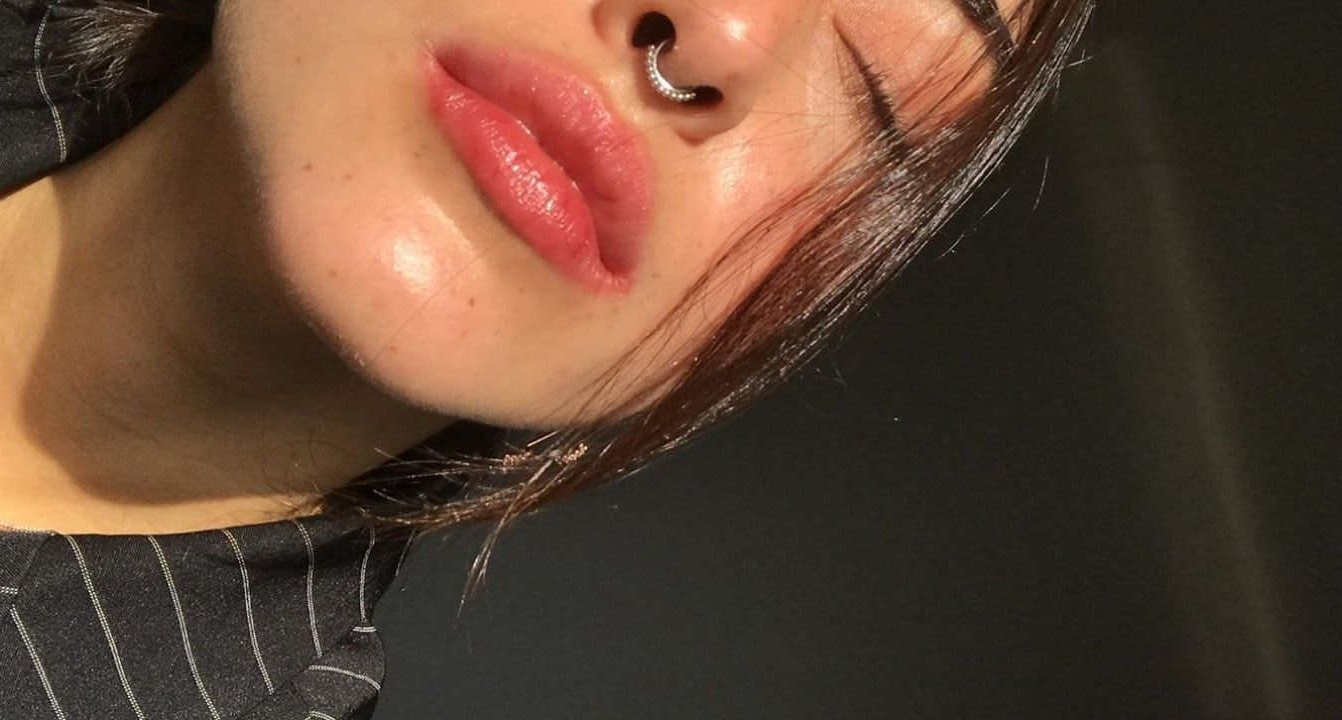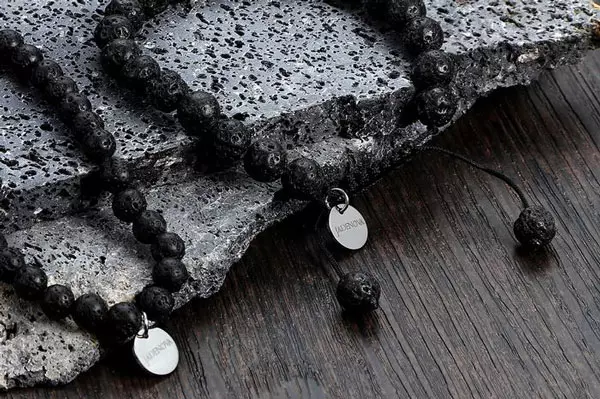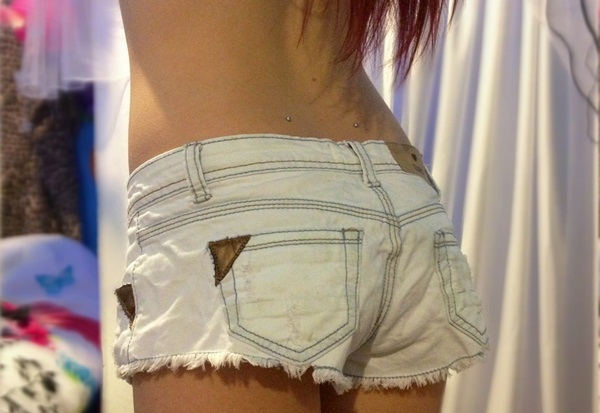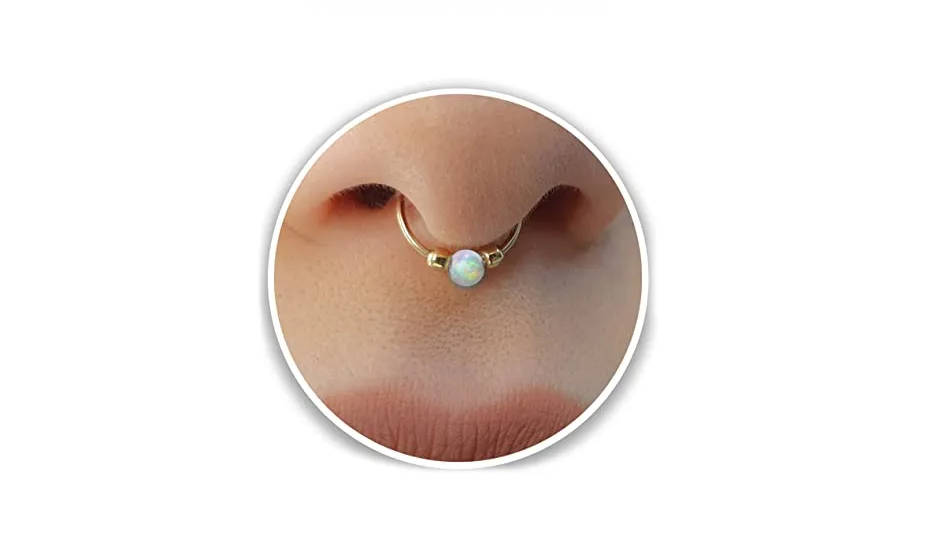Nose piercings have a long and illustrious history across time and more mainstream acceptability in popular culture. Choosing to get a nose piercing means that you’re choosing to follow the aftercare instructions carefully. Complications on your face due to a piercing are hard to conceal.
If you know the right questions to ask yourself, the types of piercings available, and the potential complications, you’ll be well-equipped to decide if you should get your nose pierced.
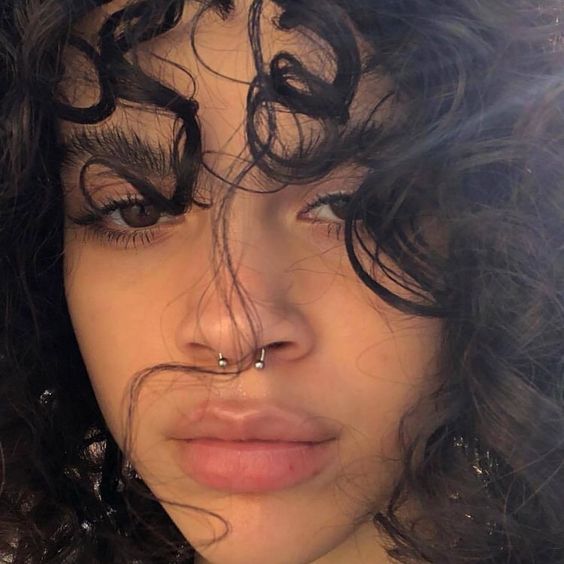
Different Types of Nose Piercings
The first step to getting a nose piercing is realizing that all piercings aren’t created equal. There are a fair few different types of nose piercings to choose from. Do you want a piercing that goes through a nostril, the septum, or the bridge of your nose?
You can’t simply walk into a parlor and say, “I’d like my nose pierced, please.” That’s much more to think about:
The different types of nose piercings are:
- Nostril: Through either the right or left nostril
- Septum: Through the columella — the space between the tip of your nose and the cartilage
- Bridge: A superficial piercing through the skin over the bridge of the nose
- Nasallang: Through both nostrils and the columella; a very technical piercing
- High nostril: Just above the typical nostril spot
- Vertical nose tip: Through the tip of the nose with one end on top and another under the tip
Piercings through your nostrils take a surprisingly long time to heal:
- Nostrils: In two to four months, a nostril piercing should be fully healed
- Septums: Six to eight weeks
- Bridge: Eight to 12 weeks
- Nasallang: Four to six months
- High nostril: Two to four months
- Vertical nose tip: Takes the longest and should be fully healed by six to nine months.
Be prepared to keep up aftercare for the entire length of the healing time. Failure to do so can result in complications that may deform your face. Those are some high stakes.
What should I know before I go for the piercing?
When we are talking about these piercings, there are several factors to think of. But the following are the most important.
You‘ll sign a consent form
Before any professional piercer pierces your nose, ear, or any part of your body, you have to consent. Here you will fill specific forms. This is also the reason why you need to be over 18 for you to receive the piercing. You will notice that if you are 16, no one will allow you to pierce your nose.
Remember, you will even need to be 21 for you to go for that piercing alone. Otherwise, you will need the consent of your guardian.

Have you found a professional?
Take the time to search for the right piercer. Although it may cost you a lot more than street piercing, you will be safe and sure they know what they are doing. Of course, they will have a standard higher cost, but there won’t be piercings gone wrong.
Preparation before nostril piercing
By this, we mean a lot because this is also the time when you will determine whether you are the right candidate for piercing.
Check if you have an infection?
When you develop a bacterial infection, you can be sure it’s not fun, and as such, you should stay off piercing for some time. We say that because if you still have an infection, your immunity will go low as the cells are out fighting the condition in the other part of the body. This is why we say you should heal the infection first then pierce.
Are you skin sensitive?
Some of us are born with this sensitivity, and if you are allergic to any metal, you should know it at this time. Most people are allergic to nickel, which you’ll find in different metals. Surgical steel is excellent, but you can also choose the niobium and titanium metals. They will never cause a skin reaction.
So choose the right piercing, and if any metals have caused skin sensitivity before, you will need to tell your piercer.
Can I hide the piercing?
It all depends on the part where you intend to pierce. If you are going for the nostril, for example, it’s usually small. This means that you can remove the jewel and go by without no one knowing you have a piercing.
If you have a septum piercing, then you can flip the jewel on the inside. But if you will have a bridge piercing or Nasallang, it’s had to conceal the piercings.
For those who scar a lot
Some of us deal with many scars, and if this is you, then maybe you shouldn’t try to pierce your nose. However, you can go for those with hidden parts like the septum one. Avoid nose piercing if you develop keloids often.
Give it time to heal
Aftercare is necessary for healing, but so is the time essential. It would help if you were willing to give your piercing the time it needs to heal.
Is it a bad idea to get your nose pierced?
Any procedure on this part of your face could cause a serious infection. You could also be more likely to get: Infection. Bacteria that line the inside of your nose can cause an infection.
Complications When Getting Your Nose Pierced
If a piercer accidentally puts the needle through your cartilage, this usually results in bleeding, hematoma, and infection. Make sure that you’re comfortable with the skill and knowledge of your piercer.
Complications of a nose piercing can result in deformity. Remember that these piercings, as common as they may be in society, are on your face. Anything superficially that goes wrong with them will be difficult to conceal.
Acceptability of Nose Piercings
Nose piercings are among some of the most mainstream forms of facial piercings in the West. For that reason alone, you may feel comfortable getting one.
The tradition of nose piercing, however, takes you back much further into older traditions. In Eastern culture, the Ayurveda, or book of life, recommends piercings in the left nostril for reasons similar to acupuncture. This placement on the body is thought to lessen the impact of childbirth and have positive effects on the reproductive health of women.
Why you should never pierce your nose?
Rejection and Trauma
Not only can your body actually push the metal out of the skin, but it could absorb the metal, causing the skin to grow around it. This could lead to infection and/or require surgical removal of the jewelry. Another danger of this type of piercing is trauma.
Is it better to get a nose ring or stud?
You can choose either a stud or a hoop as your initial jewelry, but the hoop will cause the piercing to heal with a slight curve, so it’s recommended that you start with a nose stud. … It’s important to note that your first jewelry will need a longer prong in order to accommodate swelling.
Nostril Piercing Healing Process
The nostril piercing takes around 4 – 6 months to fully heal. It’s always a good idea to talk to your piercer before stopping aftercare practices or changing your jewelry. Healing times vary from person to person, and sometimes the interior of your piercing takes much longer to heal than the exterior.
Cartilage piercings have a tendency to form piercing bumps if you don’t adhere to proper aftercare practices, so it’s important to make sure that you treat the nose piercing very carefully during the first six months.
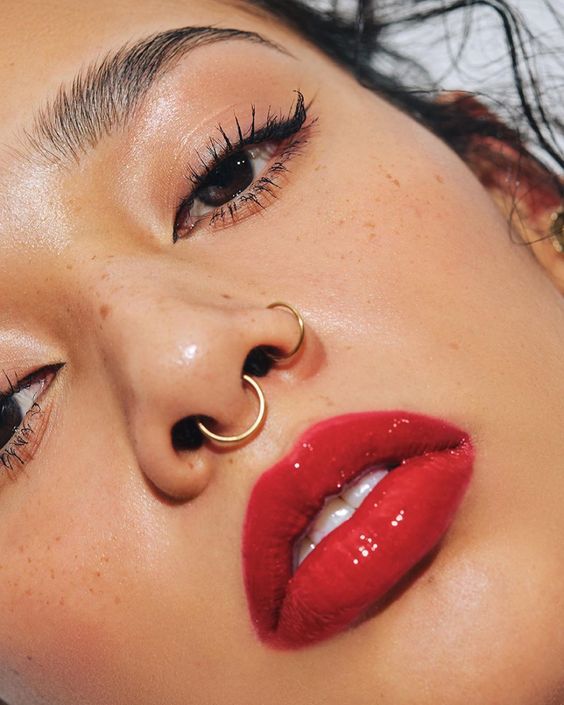
Should I get my nose piercing?
I first saw my sister having pierced her nose, and I have to say it’s such a chic look. Luckily, by the time I was going for mine, I was sure I wanted it, and no one could talk me out.
So if you meet the requirements, then it’s okay to get the piercing.
Notice that the aftercare of the nose piercing is essential to making sure you heal the nose correctly. But don’t worry, I know how nerve-wracking the whole process of piercing can be. Think of the end goal, though, and that will give you that push to go on with the piercing.
Why Shouldn’t I Get a Nostril Piercing?
The aesthetics of this piercing really depends on the anatomy of your nose. The nostril piercing can be placed anywhere on the nostril, but it’s most typically placed in the crease of the nostril where the cartilage is thinnest. From there, you and your piercer can decide the optimal location to best complement the shape of your nose.
If your nose crease is particularly pronounced, it might be difficult to find jewelry that will fit comfortably. You can talk to your piercer about options, or you might want to consider another jewelry option.
Blowing your nose can be especially difficult during healing. It will hurt to press the tissue against the new piercing as you blow your nose, and snot and boogers can get caught in the jewelry. If you tend to get allergies, then you’ll want to wait until allergy season is over to get your piercing.
Will the nose piercings hurt?
This is one of the most common questions that make people back off. But when you think of it, the piercing will hurt just once, and then the hole remains for you to use forever.
If you are one of those who experiences just a familiar pain, you should expect more and more than that.
Get this; you shouldn’t compare it to the ear-piercing because they aren’t the same. The piercing is quick, and you can expect to feel like someone’s pushing a bar through your nose. Nonetheless, it’s going to be a little painful because the needle goes through the cartilage.
History with Allergic Reactions
Some people have allergic reactions to the metals used in a piercing. Jewelry for piercings are usually made of:
- Stainless steel
- Gold
- Niobium
- Titanium
- Alloys
To minimize a potential allergic reaction, stainless steel is usually the best choice. Niobium and titanium are also almost always hypo-allergenic. Nickel is often used in alloys and can cause allergic reactions. Be aware of whether you’ve ever exhibited an allergy to a metal before and pick a piercing accordingly.
Can You Keep the Piercing in All the Time?
Some of the nose piercings are quite easy to conceal. Studs in a nostril piercing are small and not very eye-catching. Septum piercings that are horseshoe-shaped may be hidden by the tip of your nose or easily removed. Other piercings, like the bridge, vertical nose tip, and nasallang, are more eye-catching and challenging to conceal
How Much Will it Cost?
Nostril piercings are lower on the cost scale at around $30 – $60. The location of the nostril piercing is incredibly important; a misplaced nostril piercing can completely change the aesthetic of your nose. You want to opt for an experienced piercer who has an eye for piercing location. While the location of your piercing is ultimately up to you, it’s best if you have a piercer who can give you advice that you can rely on.
Always choose a piercer who uses a needle over a piercing gun. Piercing guns harbor bacteria and use blunt force to puncture the piercing. In any piercing, it’s important to use a needle, but it’s even more important in any cartilage piercing since the blunt force can cause permanent damage to the pierced area.
Often, you will have to pay for the jewelry on top of the piercing. While options like nickel are cheaper, you want to choose more expensive jewelry options, like 14k gold or surgical steel. Even if you’ve never had sensitivities to metal, a fresh piercing could trigger sensitivities, so it’s best to choose metals that won’t agitate your skin as it heals.
Making a Decision About a Nose Piercing
When you’re deciding about whether to get a nose piercing or not, it’s essential to consider the different options you have. Aftercare is a key consideration as the healing length differs greatly between the various options for nose piercings. Considering your risk factors for infection, scarring, allergy, discretion, and anatomy are all necessary when deciding on a piercing through your nose.
If you want to ensure your piercing heals as best as it possibly can, it’s imperative that you follow your piercer’s aftercare advice closely, and be sure to invest in a high-quality aftercare solution to aid recovery.
The best piercing aftercare product I’ve ever had the pleasure of using up to this point is the After Inked Piercing Aftercare Spray. Not only is it vegan-friendly, but it’s also completely alcohol and additive-free. The solution works well on all skin types including sensitive skin, and it comes in a generously-sized mist-spraying bottle for easy application.
Ten articles before and after
How To Accessorize the Black Dress For the Wedding?
What Are the Best Jewelry Boxes and Organizers?
15 Creative Ways to Wrap Jewelry As a Gift Super Easy
What Gemstones And Crystal Should Not Be Worn Together?
What Should You Do If Your Ring Is Too Loose?
The Pros and Cons of Nose Piercing
5 Best Customized Pregnancy Belly Rings
15 Best Hypoallergenic Body Jewelry
